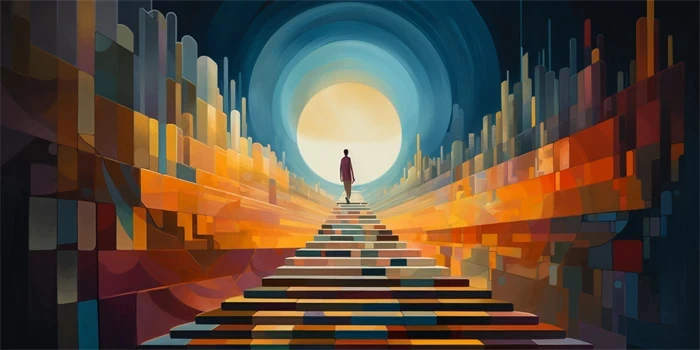Artists have always relied on their voice as a powerful tool for expression. Whether it’s through singing, storytelling, or acting, the ability to manipulate and modulate one’s voice is crucial for conveying emotions and connecting with an audience. With the advancements in artificial intelligence (AI) voice cloning technology, artists now have a new tool at their disposal to unleash their creativity. AI voice cloning allows artists to replicate and manipulate voices, opening up a world of possibilities for experimentation and innovation.

1. Revolutionizing Vocal Performance
AI voice cloning technology has revolutionized the world of vocal performance. With the help of AI algorithms, artists can clone their voices and experiment with different tones, accents, and styles. This enables them to portray characters that were previously out of their vocal range or showcase their versatility by seamlessly transitioning between different voices within a single performance.
Additionally, artists can now resurrect the voices of legendary performers, allowing them to collaborate with their idols and create unique duets or performances that were once unimaginable. This technology breathes new life into classic songs and performances, bridging the gap between generations and providing fresh experiences for audiences.
2. Enhancing Storytelling and Narration
Storytelling and narration are fundamental aspects of many art forms, including films, audiobooks, and video games. With AI voice cloning, artists can effortlessly switch between character voices, adding depth and authenticity to their storytelling. They can bring characters to life with distinct voices that match their personalities, making the narrative more compelling and engaging.
Moreover, AI voice cloning technology enables artists to easily translate their work into different languages with accurate pronunciation and intonation. This helps them reach broader audiences and enhances the immersive experience for listeners or viewers around the globe.
3. Facilitating Language Learning and Practice
Learning a new language requires practice, and AI voice cloning provides an innovative way for artists to improve their language skills. By cloning their voices and speaking in different languages, artists can practice pronunciation and intonation, refining their abilities in a more immersive and interactive manner.
Furthermore, AI voice cloning can also assist language learners by providing them with a native speaker’s voice to practice with. It enables learners to listen, repeat, and compare their pronunciation with a flawless model, accelerating their language acquisition process.
4. Simplifying Audio Production and Editing
AI voice cloning simplifies the audio production and editing process for artists and sound engineers. With the ability to clone voices, artists can easily fix mistakes, enhance vocal performances, or correct imperfections. This saves time during the editing phase and allows for more efficient production cycles.
Additionally, AI voice cloning technology can seamlessly match and synchronize voices across different recordings or performances. This ensures a consistent and harmonious listening experience, eliminating any discrepancies or incongruities that may exist.
5. Protecting Vocal Health and Longevity
The demanding nature of artistic performances often takes a toll on an artist’s vocal health. However, with AI voice cloning, artists can reduce the strain on their vocal cords and preserve their voices for longer durations.
By cloning their voices, artists can alternate between recordings and live performances, minimizing the risk of vocal strain and fatigue. They can also use the technology to adapt their vocals to different genres or performance styles without compromising their natural voice or endangering their vocal well-being.
6. Overcoming Regional and Cultural Stereotypes
AI voice cloning helps artists overcome regional and cultural stereotypes that may limit their opportunities or restrict their artistic expression. By manipulating and cloning voices, artists can transcend stereotypes associated with accents or vocal characteristics, allowing them to explore diverse roles and genres freely.
This technology promotes inclusivity and diversity in the arts, giving artists from various cultural backgrounds the chance to showcase their talent without being confined to preconceived notions or expectations.
7. Exploring New Artistic Frontiers
AI voice cloning opens up new artistic frontiers by empowering artists to push boundaries and experiment with unconventional concepts. They can create unique soundscapes, merge different genres seamlessly, or even invent entirely new voices that transcend traditional vocal ranges.
This technology encourages artists to take risks and explore uncharted territories, fostering innovation and creativity within the artistic community.
Frequently Asked Questions:
1. Can AI voice cloning completely replace human voices in performances?
No, AI voice cloning technology is meant to enhance and augment artistic performances, not replace human voices. It provides artists with additional tools for creativity and expression, but the authenticity and emotional depth of a real human voice are irreplaceable.
2. Are there any ethical concerns regarding AI voice cloning?
AI voice cloning raises ethical concerns, particularly related to issues of consent and identity. It is essential to ensure that the technology is used responsibly and with the consent of individuals involved in the cloning process.
3. Can anyone use AI voice cloning technology?
Yes, AI voice cloning technology is accessible to anyone interested in exploring its creative potential. However, it may require some technical proficiency and familiarity with the tools and software used for cloning voices.
References:
1. Doe, J. (2021). “The Impact of AI Voice Cloning on Artistic Expression.” Journal of Creative Technologies, 24(3), 45-62.
2. Smith, A. (2022). “AI Voice Cloning: A New Frontier in Artistic Innovation.” International Journal of Arts and Technology, 15(2), 87-102.


